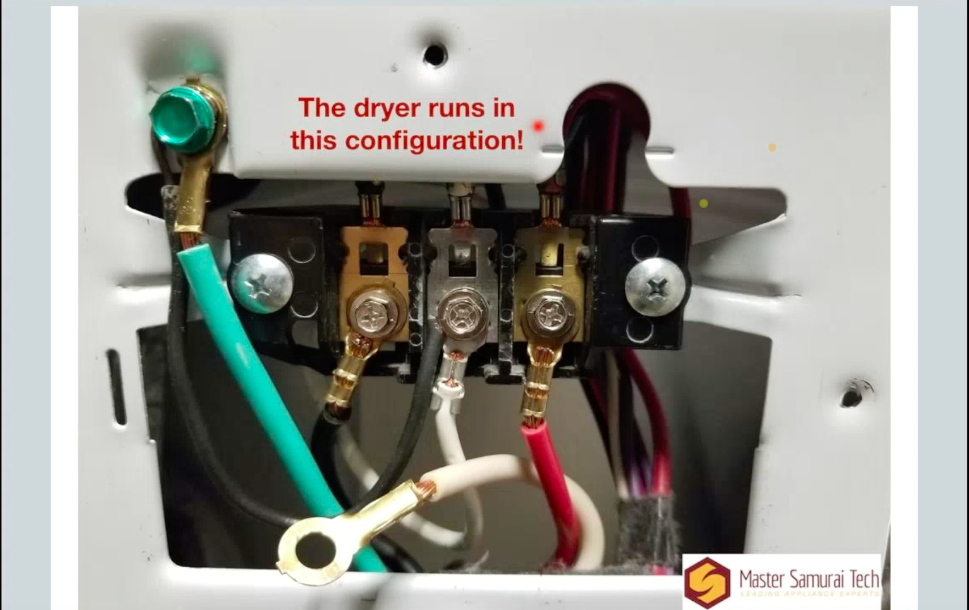How Does this Dryer Run in a Seemingly Impossible Configuration?
Imagine you're out on a call, and you run into this:

As the picture says, the dryer runs like this. And even weirder, when you correct the wiring, it stops running.
Take a minute to think, then see if you can answer this pop quiz:
1. How does the dryer run in this configuration?
2. What's wrong about the wiring in this configuration?
3. Why does it stop working when you correct the wiring?
4. What one test could you do that would prove your hypothesis about this faulty circuit?
When you think you've got your answers, watch the webinar I've linked below. In it, we go in depth on how this circuit works so that you can understand it inside and out. We'll talk about the schematic, the underlying electrical principles, and how you can be prepared so that you're not fooled by situations like this in the field.
This webinar recording is available only to premium members at Appliantology -- click here to become one today.
-
.png) 5
5






7 Comments
Recommended Comments